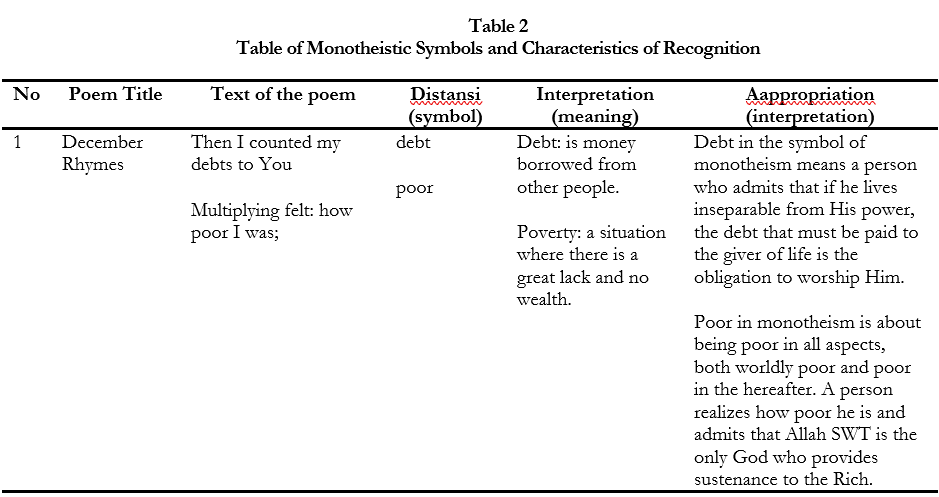Human monotheism in Allah Swt. in the anthology of the rain of june: A hermeneutic study of Paul Ricoeur
DOI:
https://doi.org/10.22219/kembara.v10i2.33697Keywords:
monotheism, Paul Ricoeur's hermeneutics, poetry, symbols, interpretation, interpretationAbstract
The Anthology of Poetry in the Book of Rain in June by Sapardi Djoko Damono is a literary work that has various dimensions of interpretation of meaning and can be interpreted in various scientific disciplines. One of them is the science of monotheism. This research aims to analyze monotheism and explain its practice with the characteristics of unification and recognition in the science of monotheism contained in word symbols, phrases or sentences in the book written by Sapardi Djoko Damono entitled June Rain. Researchers use Paul Ricoeur's hermeneutical approach theory to answer the question of human monotheism in Allah SWT. Research was studied using descriptive qualitative methods and data collection techniques in the form of literature reviews. The research results show that there are two characteristics of the science of monotheism, namely unification and recognition of Almighty Allah. These two characteristics were analyzed in three steps, namely symbols, interpretation and interpretation, which then resulted in 13 poetry titles being analyzed, resulting in 17 symbolic findings in the characteristics of unification and 19 symbols in the characteristics of the recognition of the science of monotheism. After the process of lexical interpretation and interpretation, it was found that the practice of the characteristics of unification in the science of monotheism found in the June Rain Book was found, namely practicing the contents contained in Surah Al-Fatihah. Apart from that, the second characteristic, namely the confession in the analysis of the poem, has the essence of the practice of achieving the knowledge of monotheism, namely carrying out servitude by performing prayers.
Downloads

Published
How to Cite
Issue
Section
License

This work is licensed under a Creative Commons Attribution 4.0 International License.
Authors who publish with The KEMBARA: Jurnal Keilmuan Bahasa, Sastra, dan Pengajarannya (e-Journal) agree to the following terms:
Articles are published under the Creative Commons Attribution 3.0 Unported License (CC-BY 3.0).
Under the CC-BY license, authors retain ownership of the copyright for their article, but authors grant others permission to use the content of publications in KEMBARA: Jurnal Keilmuan Bahasa, Sastra, dan Pengajarannya (e-Journal) in whole or in part provided that the original work is properly cited. Users (redistributors) of KEMBARA: Jurnal Keilmuan Bahasa, Sastra, dan Pengajarannya are required to cite the original source, including the author's names, KEMBARA: Jurnal Keilmuan Bahasa, Sastra, dan Pengajarannya (e-Journal) as the initial source of publication, year of publication, volume number and DOI (if available).
Authors may publish the manuscript in any other journal or medium but any such subsequent publication must include a notice that the manuscript was initially published by KEMBARA: Jurnal Keilmuan Bahasa, Sastra, dan Pengajarannya (e-Journal).
Authors grant KEMBARA: Jurnal Keilmuan Bahasa, Sastra, dan Pengajarannya (e-Journal) the right of first publication. Although authors remain the copyright owner, they grant the journal the irrevocable, nonexclusive rights to publish, reproduce, publicly distribute and display, and transmit their article or portions thereof in any manner.






_.png)
















